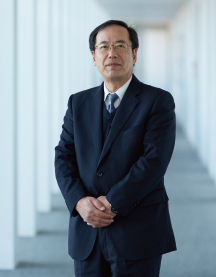Center for Integrated Volcano Research
As a “General Hospital” to diagnose and treat Japan’s Volcanoes
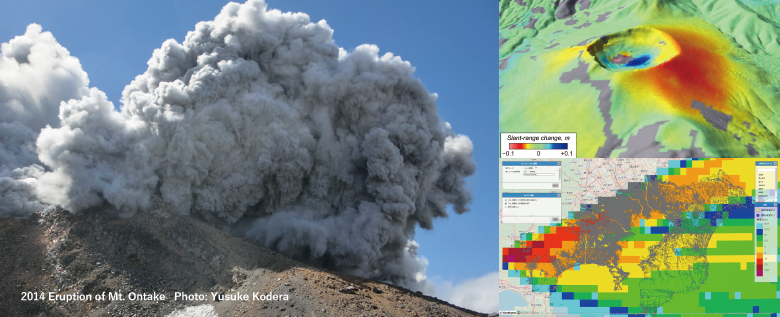
The 2014 Mt. Ontake Eruption was the worst volcano disaster in postwar Japan, claiming many lives. It resulted in the establishment of this center, which functions as a hub for volcano disaster forecasting research and conducts initiatives that could be described as a “general hospital” for volcanoes. In addition to constricting a platform for unifying volcano observation data, the center also promotes research and development for observation/prediction/countermeasure technologies through close linkages with related organizations. It also focuses on cultivating the next generation of researchers, as there is a shortage of volcano experts in Japan.
Diagnosis and treatment of volcanoes (much like a general hospital)
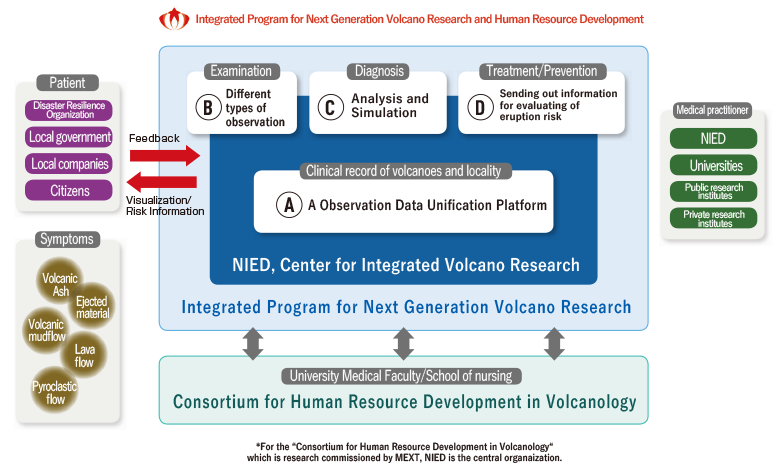
NIED’s 4 main activities
-
(A) Observation Data
Unification Platform As a volcano disaster prevention research hub, we unify data of researchers and organizations that have up to now been individually held so that they can be effectively utilized, and oversee promotion of Japan-wide volcano research. Unified sharing system Organization responsible for this subject
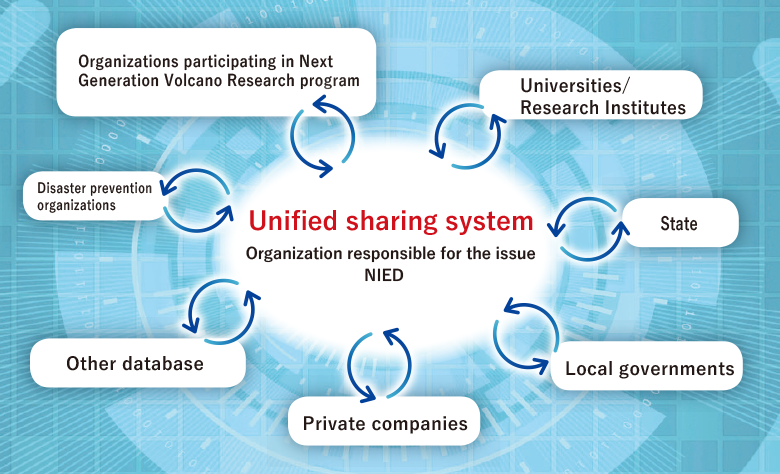
-
(B) Various kinds of observation
We are constantly attempting to develop and improve observation techniques so that precise data can be used promptly. An example of this is whole area crustal deformation observation through remote sensing using satellites, which is an indispensable tool for forcasting eruptions.
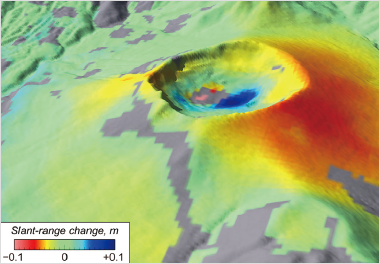
Precursory crustal deformation during the 2017 Mt. Shinmoedake (Kirishima) Eruption captured by satellite remote sensing. -
(C) Analysis and Simulation
For instance, in order to evaluate what the falling ash damage would be on the Tokyo Metropolitan Area in the event of an eruption of Mt. Fuji, we are developing more sophisticated volcanic hazard simulations.
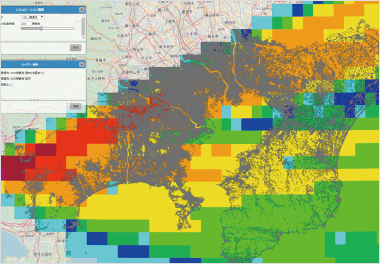
Simulation of falling ash by a possible eruption at Mt. Fuji. -
(D) Sending out information for evaluating risk of eruption.
To minimize eruption disaster, it is vital to output precise information in a form that is well aligned to the needs of users. Based on interviews to local governments, we conduct research and development for information tools.
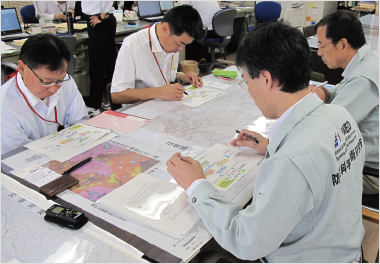
Promoting volcano research with data management on one axis, and cultivating the next generation on the other.
Director-General NAKADA, SetsuyaThere is a regrettable tendency that when a volcano erupts, researchers compete for results and media get a scoop, without worrying of saving the lives of citizens and protecting their property. It is vital to properly restore the results of volcano research to citizens and to provide them with precise information. To do so, data obtained in the course of research must be managed in a unified manner under a system conducive to its effective usage. We are also working in linkage with educational institutions so that experienced volcano researchers can exercise their knowledge and wisdom to cultivate the next generation of researchers. We expect to see these efforts materialize several years down the line.
